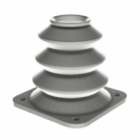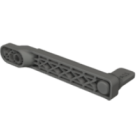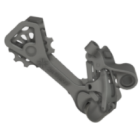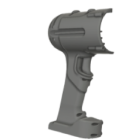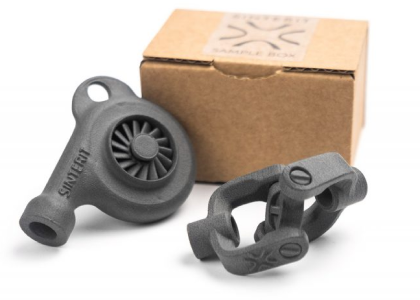3D printing comparison
Choosing the right 3D printing technology isn’t just about hardware — it’s about aligning performance, material, cost, and application. With so many options available, understanding the comparison of 3D printing technologies is essential. Each process has its strengths and trade-offs. The goal isn’t to find the “best” one, but rather the one that fits your use case best.
Understanding the different 3D printing technologies
While there are over a dozen commercialized additive methods, the most relevant for industrial and professional use fall into five core categories: FDM, SLA/DLP, SLS, MJF, and DMLS/SLM. Each uses a different material form — filament, resin, powder, or metal — and different mechanisms to build parts layer by layer.
- Fused Deposition Modeling (FDM) melts and extrudes thermoplastic filament to form parts. It’s cost-effective, widely available, and ideal for prototyping and functional components when precision isn’t critical.
- Stereolithography (SLA) and Digital Light Processing (DLP) cure resin using light. These methods deliver extremely fine detail and smooth surfaces, making them a top choice for dental models, jewelry, and miniature design.
- Selective Laser Sintering (SLS) uses a laser to fuse nylon powder. It produces robust, accurate, and support-free parts, making it suitable for functional prototyping and small-scale production of durable components.
- Multi Jet Fusion (MJF) also prints with nylon powder but uses a fusing agent and infrared heat instead of a laser. This results in even better part isotropy and faster production, especially for end-use plastic parts in small-to-medium batches.
- Direct Metal Laser Sintering (DMLS) and Selective Laser Melting (SLM) fuse metal powders to produce fully dense metal components. These are used in aerospace, automotive, and tooling applications where strength, heat resistance, and material performance are non-negotiable.
Key differences that matter
When making a comparison of 3D printing technologies, it’s important to evaluate them through practical lenses — part quality, surface finish, design freedom, mechanical properties, build size, cost per part, and ease of use. Each technology represents a balance of these attributes.
| Technology | Material form | Surface quality | Strength & function | Detail resolution | Cost to operate | Ideal use cases |
|---|---|---|---|---|---|---|
| FDM | thermoplastic filament | medium | medium | low to medium | low | prototypes, functional brackets, education |
| SLA / DLP | photopolymer resin | very high | low to medium | very high | medium | visual models, dental, jewelry, miniatures |
| SLS | nylon powder | high | high | medium to high | medium to high | prototyping, small series, enclosures |
| MJF | nylon powder + agents | high | very high | medium | medium to high | end-use parts, functional housings, tooling |
| DMLS / SLM | metal powder | medium to high | very high | medium | high | aerospace, tooling, custom metal components |
Which one should you choose?
Your choice depends entirely on what you’re printing and why. If you’re focused on early-stage prototyping or education, FDM offers unbeatable accessibility. If you’re creating visual models, masters for casting, or ultra-precise devices, SLA and DLP lead the field. For engineers needing functional, load-bearing, or mechanically complex plastic parts, powder-based methods like SLS or MJF are the most versatile — especially when geometry freedom and part strength matter. (Learn more in When to Choose SLS vs Other Technologies).
And for industries replacing machined metal or developing high-value custom parts, DMLS and SLM are the only viable option.
What matters is not just what a machine can print — but what it can print well, repeatedly, and at a cost you can justify.
Conclusion: choosing the right 3D printing technology
There is no single winner in the comparison of 3D printing technologies — only the right fit for your needs. Whether you’re optimizing for visual detail, mechanical function, or production throughput, the technology you choose defines your capabilities and limitations. By understanding the core differences between types of 3D printing technology, you’re better equipped to invest wisely and unlock the full potential of additive manufacturing.
Explore also
- What to know before buying a 3D printer
- What is the highest quality 3D printer?
- Factors to consider when buying a 3D printer
- SLS vs other 3D printing methods: when to choose it
- How to future-proof your 3D printer investment
- What to buy with a 3D printer
Related categories




